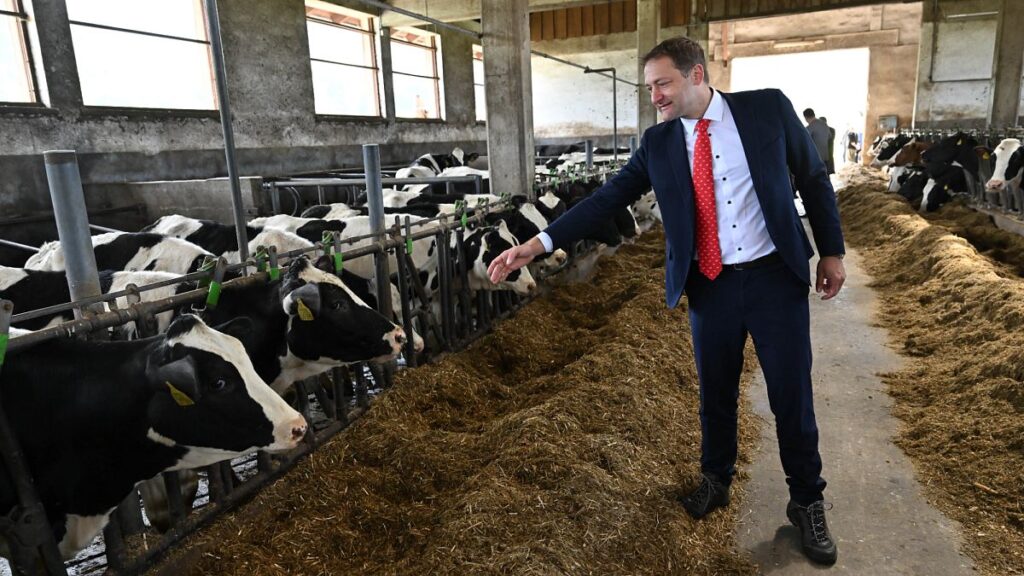What the European Commission is set to unveil today marks only the first stage of a sweeping transformation that will redefine the Common Agricultural Policy (CAP) at its core.
In many ways, the upcoming changes are the culmination of reforms initiated in response to farmers’ protests, focused on simplification and reducing conditionality.
Now, these efforts are being pushed to their logical extreme.
Yet, EU Agriculture Commissioner Christophe Hansen faces a challenging road ahead, as the reforms are expected to be seen as drastic.
At the heart of the shift is an unprecedented simplification: the CAP will be absorbed into a single fund—alongside previously distinct funding mechanisms like Cohesion Policy or the EU’s fisheries subsidies—under a unified set of delivery rules for disbursing funds.
One of the most symbolic changes is the abolition of the long-standing CAP structure built around two pillars, a structure in place since the 1999 reform.
For CAP ‘traditionalists’, this is a major blow.
Despite the clear rationale behind this overhaul—simplify the EU’s farming rulebook—the new architecture of EU agricultural subsidies will be among the most complex elements of the upcoming EU budget.
Here are five key ideas underpinning the reform:
1. Evolution toward revolution
Since taking office, Commissioner Hansen has repeatedly pointed out that the next CAP would be an “evolution, not a revolution”. But the reality seems to contradict his rhetoric.
The new structure—and especially the shift to a single fund and removal of strong conditionality—has left many in the sector surprised, given Hansen’s previously moderate stance, which enjoyed support from major stakeholders.
In truth, it’s a blend of both.
The reform is indeed an evolution, building on recent simplification measures introduced after last year’s farmer protests.
Even the new delivery model, for instance, closely mirrors the current system agreed in 2021 based on 27 national strategic plans.
However, these ‘evolutionary’ elements have now crystallised into a full-scale revolution: a single fund, a single budget heading, and minimal EU-level conditionality.
2. The ‘Great Merger’ is gentler on agriculture
Another long-feared development has come to pass: the merger of regional funds and agricultural subsidies.
Both CAP and Cohesion Policy, which account for two-thirds of the EU budget, will now be folded into a broader Single Fund.
For the agricultural sector, the impact is softened.
A ring-fencing mechanism ensures that a minimum share of the fund remains earmarked for agriculture, protecting it from budgetary flexibility that will affect other areas like cohesion policy more significantly.
Despite agriculture receiving special consideration, the von der Leyen Commission’s push for radical simplification of the program has proven unstoppable.
3. Rural development is still there (but no longer as a pillar)
Since 2000, the CAP has operated under a two-pillar system, separating direct payments (the so-called first pillar) from rural development projects (also known as the second pillar), with the latter funded through multi-annual, co-financed programs.
The new EU budget proposal would eliminate the CAP’s ‘second pillar’—but this doesn’t mean rural development will disappear completely.
Under the new CAP architecture, rural development actions such as support for small farmers or agri-environmental measures will continue, but no longer as part of a distinct ‘pillar’ with its distinctive policy objectives.
Critical elements such as the terminology, structural division, and foundational aspect are gone, though the substance of rural development (including its co-financed feature) remains.
4. Losing the “C” in CAP
The risk of renationalisation—where the “Common” part in the Common Agricultural Policy begins to fade—has been growing since the previous CAP reform proposed by the then agriculture Commissioner Phil Hogan and agreed on by lawmakers in 2021.
That risk is now a reality.
Post-2028, CAP implementation will lean heavily on bilateral negotiations between the European Commission and individual member states.
Other influential actors, particularly local authorities but also the European Parliament, will have little say.
With member states gaining significant autonomy over how funds are spent, the CAP is becoming increasingly national in character, which could undermine its ‘common’ objectives.
5. Familiar foundations with a few new twists
Some foundational CAP elements will remain intact.
Area-based income support and coupled income support—both central features of direct payments—will still be in place (with few tweaks).
The crisis reserve, introduced in the last reform to address market shocks or disasters, also survives.
But there are new features too.
Notably, all member states will be required to establish farm relief services.
These will provide support when farmers are unable to work due to illness, childbirth, or family care responsibilities, with co-financing from national governments.
Read the full article here

